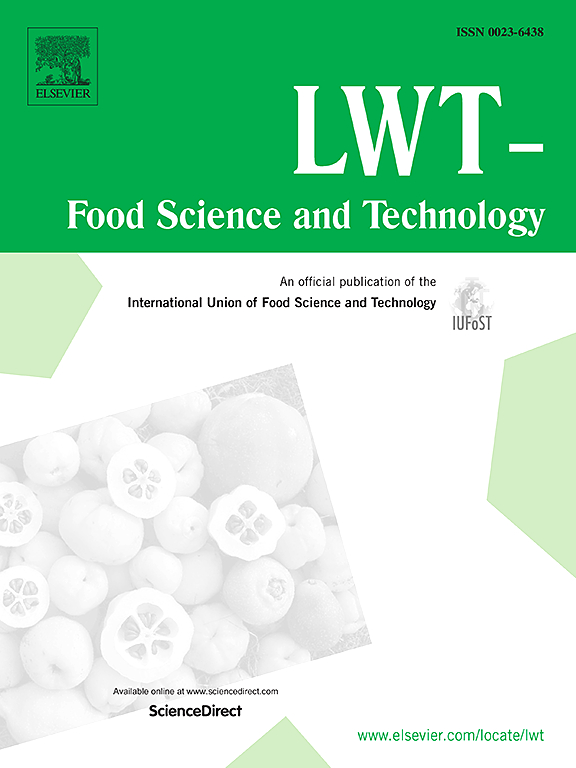Nano-engineered carbon dots from banana blossoms inhibit advanced glycation end products formation in bakery foods: A mechanistic study through multi-stage kinetic modeling
IF 6
1区 农林科学
Q1 FOOD SCIENCE & TECHNOLOGY
引用次数: 0
Abstract
Banana blossoms, a natural and sustainable source, were successfully prepared to produce carbon dots (BB-CDs) with promising anti-glycation properties. Advanced glycation end products (AGEs), implicated in various degenerative diseases, were significantly reduced in food models fortified with the BB-CDs. Spherical in shape and measuring 2.06 nm, the BB-CDs possessed a rich surface chemistry, brimming with hydrophilic and reactive functional groups. The multi-stage kinetic analysis results revealed that BB-CDs inhibited the formation and accumulation of AGEs by reducing the conversion of reaction substrates to intermediates and intermediates into end products, while simultaneously enhancing the degradation of end products. In practical application, sponge cakes fortified with 2.5 g/100 g BB-CDs exhibited marked reductions in AGEs, including Nε-carboxymethyllysine and Nε-carboxyethyllysine, by over 40%, both in free and protein-bound forms. Concurrently, BB-CDs improved the moisture retention and texture of sponge cakes, softening their structure. These findings demonstrate that BB-CDs is a novel exogenous inhibitor of AGEs, which can be applied to mitigate the production of harmful substances during thermal processing of food.

从香蕉花中提取的纳米工程碳点可抑制烘焙食品中高级糖化终产物的形成:通过多阶段动力学模型进行机理研究
本文章由计算机程序翻译,如有差异,请以英文原文为准。
求助全文
约1分钟内获得全文
求助全文
来源期刊

LWT - Food Science and Technology
工程技术-食品科技
CiteScore
11.80
自引率
6.70%
发文量
1724
审稿时长
65 days
期刊介绍:
LWT - Food Science and Technology is an international journal that publishes innovative papers in the fields of food chemistry, biochemistry, microbiology, technology and nutrition. The work described should be innovative either in the approach or in the methods used. The significance of the results either for the science community or for the food industry must also be specified. Contributions written in English are welcomed in the form of review articles, short reviews, research papers, and research notes. Papers featuring animal trials and cell cultures are outside the scope of the journal and will not be considered for publication.
 求助内容:
求助内容: 应助结果提醒方式:
应助结果提醒方式:


